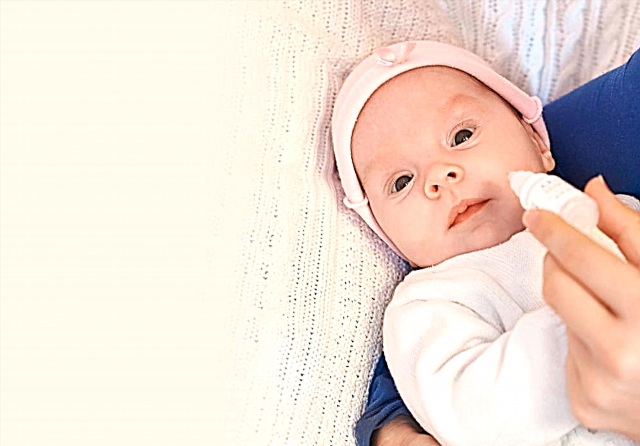The stories of children with Rett syndrome seem to be copied: pregnancy, childbirth pass without complications, on the Apgar scale, the child is given a high score. As expected, at 3 months, babies begin to hold their heads. Some children manage to take hesitant steps, say the first words, but in the future, skills are lost catastrophically. Over how many weeks the child loses the ability to communicate with others.
What is Rett Syndrome
Rett syndrome is a progressive neurodegenerative disease that affects a child's brain development and cognitive abilities. Over time, it can cause serious problems with speech and communication, lack of coordination and muscle control, involuntary hand movements, and stunted growth.
The syndrome was first discovered in 1966 by Andreas Rett, an Austrian pediatric neurologist. Rett syndrome is a rare but severe brain disorder that affects only one in 12,000 girls.
Rett syndrome almost always affects girls, although boys can get it on very rare occasions. Babies born with Rett syndrome develop like normal babies during the first few months of their life. They correspond to typical developmental stages such as eye contact, interacting with parents, and grasping objects. However, between 6 and 18 months, children with Rett syndrome begin to lose previously acquired skills, lose interest in play, and often become more irritable.
As they grow, children with Rett syndrome begin to develop communication and muscle control problems, leading to difficulties with movement such as walking. They may have trouble breathing, feeding and swallowing, and may have seizures and sleep disturbances. Most affected children are diagnosed with intellectual disability.

The modern approach to Rett syndrome treatment focuses on symptomatic treatment, improved movement and communication, and support for patients and their families. There is currently no cure for this disease. Scientists all over the world are studying, researching the pathogenesis of this disease in order to find the very cherished medicine.
In terms of prevalence in the world, this disease among the rare ones with similar symptoms stands immediately after Down's syndrome. In Russia, according to some data, there are slightly more than a hundred girls with Rett syndrome, according to others - 25% of the total number of children. Statistics are lame and here's another reason: Rett syndrome is often confused with cerebral palsy or autism.
It is important to understand that although girls and women with Rett syndrome may have difficulty communicating, they have a full range of emotions and understand more than they can express.
Causes of the syndrome
The syndrome is caused by mutations in the MECP2 gene on the X chromosome, one of the two sex-determining chromosomes. Girls have two X chromosomes, while boys have one X and one Y chromosome. Rett syndrome is most often diagnosed in girls because they have a second copy of the MECP2 gene that can work properly and the child survives.
Due to the lack of a copy of the MECP2 gene in boys, with its mutation in a single X chromosome, such children either die in utero or are very sick. In most cases, Rett syndrome is not inherited (passed from parent to child). The probability of illness in subsequent children for parents who have one sick child is approximately 1%.
To date, more than 200 mutations of the MECP2 gene associated with Rett syndrome have been identified. During normal human development, the MECP2 gene helps create a protein (Methyl-CpG binding protein 2) that regulates the activity of other genes in the body. When protein levels change due to a defective gene, it causes other genes in the body to change, which ultimately affects normal brain development.
Children with the disorder can exhibit a wide range of symptoms. This can be influenced by the location, type and severity of the gene mutation, and other factors as well. More research is needed to better understand the MECP2 gene and how it affects various bodily functions.
Symptoms
Symptoms can vary greatly. Although the genetic change that causes Rett syndrome is present before birth, in most cases, a child with Rett syndrome will grow and develop normally during the first 6-18 months of life before symptoms appear.
Key features
Initial symptoms of Rett syndrome may include the following manifestations.
- Delayed development.
- Loss of eye contact.
- Lack of interest in games and communication.
- Deceleration of head growth leading to microcephaly.
- Increased irritability.
- Decreased muscle tone (hypotension).

As sick children grow up, they may lose skills they have already learned, such as speaking, the ability to use their hands for activities such as eating. Children with Rett syndrome may show less interest in the people and objects they use. Most children with the disorder begin to exhibit the classic movements of Rett syndrome between the ages of 1 and 4.
These can include squeezing, rubbing, twisting, clapping, and repetitive hand-to-mouth movements. As the disorder progresses, it will become more difficult for children to control their muscles to perform coordinated motor movements. This neurological condition is also called apraxia or dyspraxia.
Some children with Rett syndrome can walk and maintain this ability, others may eventually lose this ability, while some may never walk on their own.
Additional signs
Additional symptoms of Rett syndrome may include the following signs.
- Children's apraxia of speech, in which the child's brain has difficulty coordinating the movements of the muscles of the articulation apparatus necessary for the formation of syllables and words.
- Involuntary muscle contractions that cause repetitive movement.
- Muscle weakness, joint contractures, and spasticity.
- Scoliosis.
- Symptoms similar to those seen in Parkinson's disease, such as tremors, decreased facial expressions.
- Sleep disturbances, including difficulty falling asleep.
- Abnormal breathing, which includes breathing too fast or too slow, breathing with swallowing air.
- Problems with eating and swallowing.
- Gastrointestinal problems, including reflux and constipation.
- Anxiety or panic attacks.
- Autism-like disorders.
- Poor growth and difficulty gaining weight.
After an initial regression, development tends to stabilize in most girls. Some skills (lack of interest in communication) may improve, while others (motor skills) may remain the same or gradually deteriorate. Other symptoms, such as breathing abnormalities or seizures, may come and go over time.
Despite their many problems, children with Rett syndrome have their own unique personality, with sympathy and antipathy, just like ordinary children.
Stages of the disease
- Initial stage: 6 to 18 months. At this stage, the first symptoms of the syndrome may appear. There is a lack of interest in toys. The development of motor skills can be delayed. The growth of the head circumference is slowed down.
- Stage 2: from 1 to 4 years old. At this stage, the biggest changes occur, often the fastest, although they can be gradual. The child becomes very irritable. Repetitive hand movements become apparent and purposeful hand movements are lost. The growth of the head circumference is slowed down. Breathing problems may occur.
- Stage 3: from 2 to 10 years. At this stage, the rapid regression of the second stage slows down, and improvements in behavior can be observed, irritability decreases. Movement control deteriorates. Loss of muscle tone becomes severe. Epileptic seizures may begin.
- Stage 4: 10+ years. This stage is characterized by loss of movement. The ability to walk is lost. Scoliosis may develop. Communication and intelligence remain the same. Repetitive hand movements may become smaller.
Diagnosis of Rett syndrome
There are problems with early diagnosis, because not all pediatricians are familiar with the first symptoms of this disease. Very often, the diagnosis is made late. Diagnosis usually begins with identifying the characteristic symptoms of the disease, as well as collecting a medical history and physical examination.
Diagnostics can include the following procedures.
- Genetic testing to detect MECP2 gene mutations to confirm clinical diagnosis
- Neurological studies such as an electroencephalogram (EEG), which measures electrical activity in the brain and can detect the presence of seizures.
- Pulmonary function tests and heart function tests, including electrocardiography (ECG), to determine how well a baby's lungs and heart are working.
Depending on the child's symptoms, more testing may be needed to identify any eating and swallowing problems, gastrointestinal problems, or other medical problems that may arise.
Rett Syndrome Treatment
There is currently no specific treatment for Rett syndrome. Treatment for children with the disorder is complex and varied and must be tailored to meet the specific needs of the child.
Treatment for children with Rett syndrome often includes the following procedures.
- Physiotherapy.
- Speech therapy.
- Rehabilitation and Behavioral Therapy.
- Special educational support.
- Psychosocial support for the child and family.
- Nutritional support from supplements, specialized diets. A high-calorie diet is prescribed to help maintain adequate weight, using a feeding tube and other feeding aids as needed.

Antiepileptic therapy is given to treat certain symptoms, such as seizures.
Children with Rett syndrome are also at increased risk of developing scoliosis and cardiac arrhythmias, both of which may require additional treatment. Beta blockers or a pacemaker are given to control heart rate.
If scoliosis becomes severe, a brace and spinal surgery are used to prevent further development of curvature of the spine
It was found that therapeutic horseback riding, swimming, dolphin therapy, hydrotherapy and music therapy have a beneficial effect on the course of the disease.
It is important to constantly perform physical activities, classes with a speech therapist, psychologist, defectologist. If you do not perform physical exercises with the child, do not engage in massage, exercise therapy, then he becomes recumbent and quickly loses all acquired skills.
Forecast
The outlook for children with Rett syndrome varies, and depends largely on the progression and severity of symptoms. Although children with Rett Syndrome need help with most of their daily activities, many may acquire some independent skills, such as eating or going to the bathroom. Although communication is generally limited, many girls can learn to communicate in other ways, such as using additional communication devices.
With support, people with Rett syndrome can live to middle age. However, due to the conditions and health complications associated with this disease, people with Rett syndrome generally have a shorter life expectancy than the average population. Some people die at a fairly young age as a result of complications such as heart rhythm abnormalities, pneumonia, and epilepsy.
Life expectancy largely depends on rehabilitation. Early rehabilitation has the potential to improve the condition.



